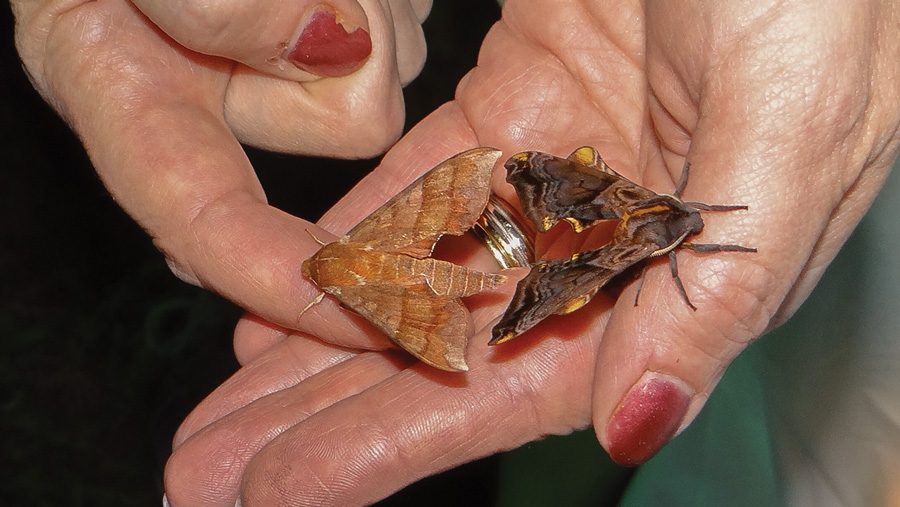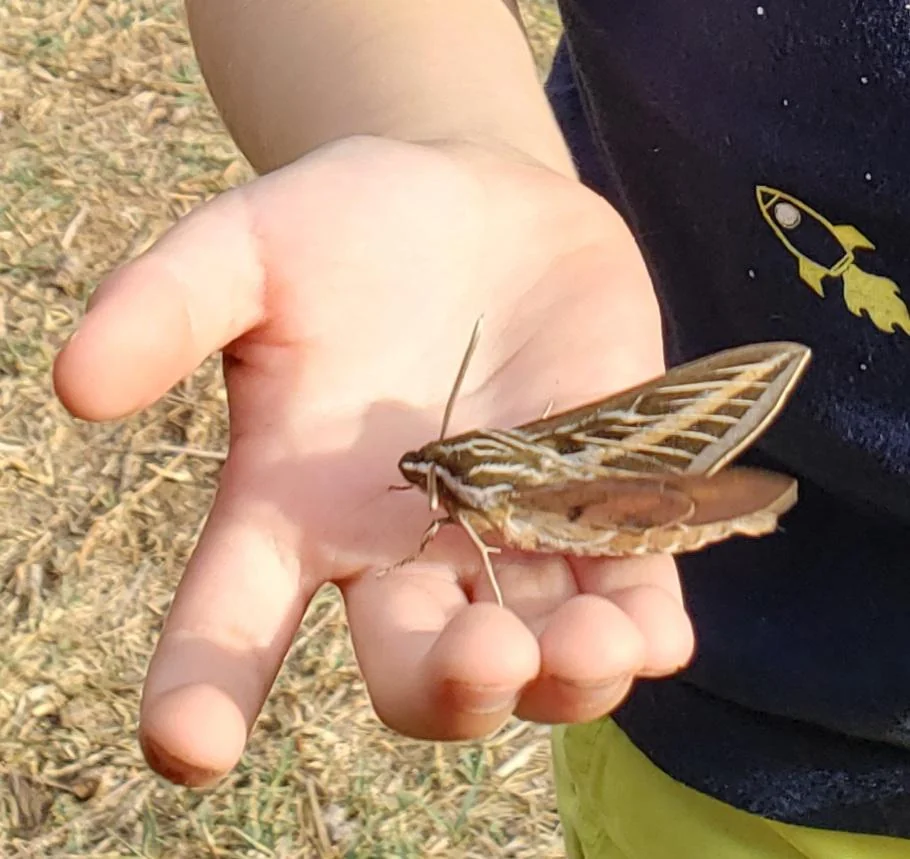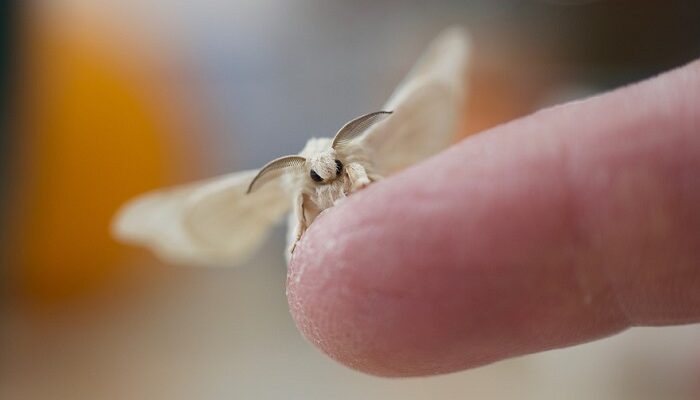Yes, you can keep a moth as a pet, but it requires careful consideration. Choose an appropriate species, create a suitable habitat with the right lighting, humidity, and temperature, and provide the correct diet.
Handle them minimally, be aware of their short lifespan, and research any legal and ethical considerations. Always prioritize the moth’s well-being and ensure you can meet its specific care needs before keeping one as a pet.
What are the key considerations for pet moth care?
Each species of moth may have unique preferences and requirements within these categories. Thoroughly researching your chosen moth species is essential to create an environment that meets its specific needs.
Species Selection
Suitability for Captivity: Not all moth species are suitable for captivity. Some moths are more adaptable to the conditions you can provide, while others may have highly specialized needs that are challenging to meet.
Research the specific species you are interested in to understand its behavior, habitat requirements, and whether it has been successfully kept as a pet by others.
Habitat Setup

Container or Enclosure: Choose an appropriate container or enclosure for your moth. It should be well-ventilated, escape-proof, and appropriately sized for the species.
Consider using mesh or gauze material to cover the top to prevent escapes while allowing airflow.
Ventilation: Proper ventilation is crucial to maintain air quality and prevent the buildup of moisture, which can lead to mold and other issues.
In addition, ensure there are small holes or mesh-covered areas in the enclosure to allow for sufficient airflow.
Substrate and Environmental Elements: Moths often prefer a substrate that mimics their natural environment. This may include leaves, twigs, or specific plants. Research the moth species to understand its preferred substrate.
Additionally, consider adding environmental elements like branches, rocks, or decorations to provide hiding spots and climbing opportunities for your pet.
Dietary Needs
Types of Food: Moth species have varying dietary requirements. Some moths primarily feed on nectar, while others may require specific types of plant material, such as leaves or flowers.
Lighting
Nocturnal Nature of Moths: Most moths are nocturnal, meaning they are active during the night. This nocturnal behavior influences their lighting requirements. They are generally more comfortable in low light or darkness during the day.
Lighting Requirements: While moths don’t need strong lighting, you may want to provide a dim light source for observation and to help maintain their day-night cycle.
Avoid exposing them to bright, direct sunlight, as it can stress or harm them. Use gentle, indirect lighting to simulate nighttime conditions.
Humidity and Temperature
Maintaining Appropriate Conditions: Moths have specific humidity and temperature requirements based on their natural habitats. Some moths come from tropical regions and require higher humidity levels, while others from temperate regions may need lower humidity.
In addition, temperature preferences also vary, with some species thriving in warmer conditions and others preferring cooler environments. It’s crucial to research your moth species and create the right microclimate within their enclosure.
This might involve using misters, humidifiers, or heating elements to maintain optimal conditions.
Handling
Minimizing Stress and Damage: Moths are delicate creatures with fragile wings. Handling them should be minimized to prevent stress and physical harm. When necessary, gently coax them onto your hand or a soft, clean surface rather than grabbing or pinching them.
Avoid touching their wings, as even a slight disturbance can damage them and hinder the moth’s ability to fly. Minimize handling as much as possible and prioritize observing their natural behaviors within their enclosure.
Lifespan:
Short Life Expectancy: Moths typically have relatively short lifespans, which can range from a few days to a few weeks for many species. Some larger moths may live longer, but their lifespans are still relatively brief compared to other pets.
In addition, keep in mind that the moth’s short life cycle is a natural part of their biology, and it’s essential to provide them with the best possible quality of life during their time in captivity.
Legal Considerations
Local and National Regulations: Before keeping moths as pets, it’s crucial to research and understand any local or national regulations regarding the capture, possession, and keeping of moths or other wildlife.
Some species may be protected, and keeping them without the appropriate permits can lead to legal issues. Ensure you are in compliance with all relevant laws to avoid potential legal consequences.
Ethical Considerations
Ensuring the Moth’s Well-being: As a responsible pet owner, your primary concern should be the well-being of your pet moth.
In addition, ensure that the conditions you provide meet its physical and behavioral needs. Regularly assess its health and make adjustments to its habitat or care as needed.
Impact on Wild Populations: Consider the ethical implications of capturing moths from the wild. Overcollecting can have a negative impact on wild populations, disrupting local ecosystems.
Whenever possible, consider obtaining your pet moth from reputable breeders or sources that promote ethical and sustainable practices, such as captive breeding programs.
What are the specific reproductive needs of moths?

Breeding moths can be a rewarding but challenging endeavor, as it often requires a deep understanding of the specific needs and behaviors of your chosen moth species.
Reproductive Needs
Species-Specific Requirements: Moth species have unique reproductive needs. Understanding these requirements is crucial for successful breeding. Some moths are highly specialized and may have specific host plants where they lay their eggs, while others may require specific environmental cues, such as temperature fluctuations or seasonal changes, to initiate mating and egg-laying.
Mating Behaviors: Moths typically engage in specific mating behaviors, which can vary widely between species.
These behaviors might include pheromone release by females to attract males, courtship rituals, or even specific flight patterns. Observing and understanding these behaviors in your particular moth species is essential for facilitating successful reproduction.
Egg-Laying Sites: Female moths select appropriate sites for laying their eggs, often choosing host plants or substrates that will provide food and protection for their larvae (caterpillars).
Creating Conditions for Mating and Egg-Laying
Environmental Conditions: To encourage mating and egg-laying, it’s essential to replicate the natural environmental cues that trigger these behaviors in the wild.
This may involve mimicking seasonal changes, temperature fluctuations, or specific humidity levels. For some species, diapause, a period of dormancy, might be required to initiate breeding.
Diet and Nutrition: Ensure that your moths have access to a suitable diet, as proper nutrition is crucial for reproductive success.
Females need to be well-nourished to produce healthy eggs. Additionally, provide access to any specific host plants or substrates required for egg-laying.
Separating Males and Females: In some cases, it may be necessary to keep male and female moths separate until you are ready to facilitate mating. Once they are introduced, closely monitor their behavior to ensure successful copulation.
Egg Collection and Care: If you are successful in breeding moths, be prepared to collect and care for the eggs and subsequent larvae (caterpillars).
Moreover, ensure that the egg-laying substrate and conditions are conducive to the survival and development of the young moths.
Record Keeping: Keep detailed records of the breeding process, including dates of mating, egg-laying, and hatching.
Furthermore, this information can be valuable for future breeding attempts and for understanding the life cycle of your moth species.
FAQ’s
Should I touch a moth?
It’s best to minimize touching moths, as they are delicate, and handling can potentially harm their wings or cause stress.
What is the fluffiest moth?
The “Poodle Moth” (Artace sp.) is often considered one of the fluffiest moths due to its furry appearance.
What kills moths?
Moths can be killed by various factors, including predators, pesticides, and natural causes.
What does a moth turn into?
A moth undergoes metamorphosis and turns from a larva (caterpillar) into a pupa (cocoon or chrysalis) before emerging as an adult moth.
What is the cutest moth called?
The “Rosy Maple Moth” (Dryocampa rubicunda) is often regarded as one of the cutest moths due to its pink and yellow coloring.
What is the cutest moth name?
The “Pink Flannel Moth” or “Southern Flannel Moth” (Megalopyge opercularis) is known for its cute name, despite its deceptively cuddly appearance.
Can I buy a moth?
In some cases, you may be able to purchase moths from breeders or insect suppliers, but it’s essential to check local regulations and ethical considerations before doing so.
Final Thought
In conclusion, keeping moths as pets can be a unique and fascinating experience, but it comes with significant responsibilities. Proper research and understanding of the specific species you wish to keep are paramount to providing a suitable environment and ensuring the well-being of your pet moth. Factors such as habitat setup, dietary needs, humidity, temperature, and handling must be carefully considered and tailored to the species’ requirements.
Additionally, being mindful of legal and ethical considerations, including local regulations and potential impacts on wild populations, is essential for responsible pet ownership. Lastly, recognizing the relatively short lifespan of moths and focusing on their quality of life during their time in captivity is crucial.
With the right knowledge and commitment, keeping moths as pets can be a rewarding endeavor for those who appreciate these remarkable insects.

